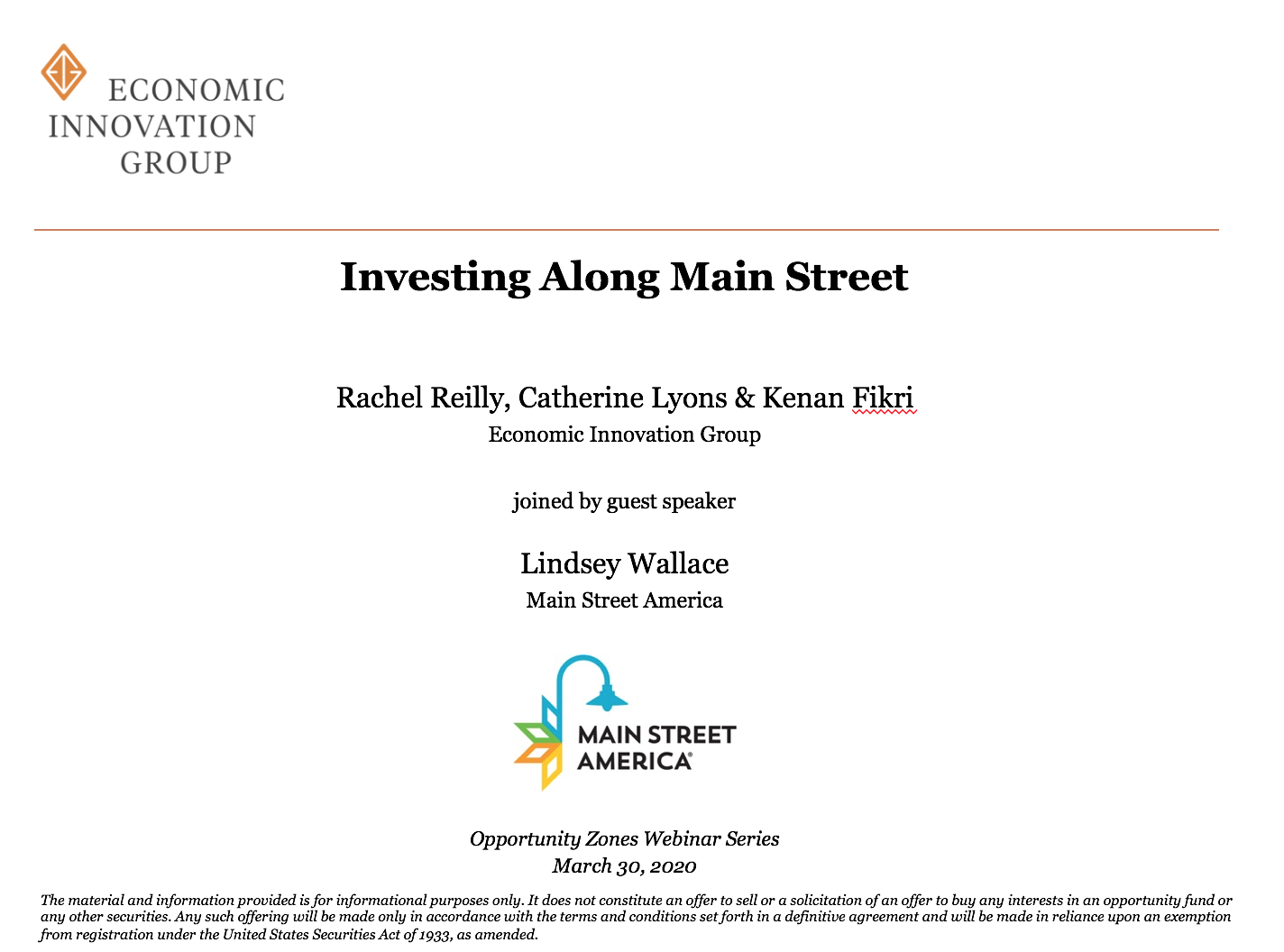By Rachel Reilly
On March 30th, the Economic Innovation Group and Main Street America held a webinar to discuss efforts to strengthen small businesses and Main Street areas across the nation. Speakers shared information about programs and community strategies designed to maximize the potential of Opportunity Zones (OZ), and provided examples of OZ investments that are creating value for local residents and businesses. In response to the unfolding COVID-19 crisis, speakers also shared information about emergency relief efforts for small businesses, as well as available resources.
A recording of the webinar can be found here.
Key Takeaways
Supporting Small Businesses and Main Streets During the Crisis
- EIG is tracking and analyzing federal relief programs and identifying which communities and sectors of the economy will be disproportionately affected.
- Main Street America is compiling existing resources, opportunities, and community response examples to help Main Street districts.
- Local governments and nonprofits responded swiftly to support COVID-19 impacted small businesses by standing up emergency grant and loan funds, and many of the same groups charged with implementing local Opportunity Zones strategies are now leading or supporting these relief efforts.
Strategies for Maximizing Opportunity Zones for Main Street Revitalization
- Main Street America is a program of the National Main Street Center – a national network of more than 1,000 local affiliate organizations and 45 Main Street Coordinating Programs that support the revitalization of small towns, mid-sized communities, and urban commercial districts.
- Nearly half of Main Streets within the network overlap with Opportunity Zones. The one-on-one services MSA offers to help communities plan, implement, and build capacity for impactful developments can support local Opportunity Zones strategies.
- The final Opportunity Zones regulations include favorable exceptions for Tribal, state, and local governments on leasing and vacancy rules, and will allow communities to better address vacancy and blight. The final regulations are covered in this webinar.
- As of January 2020, approximately $7.5 billion had been invested in more than 300 Opportunity Funds. This investment represents a portion of total market activity, and investments are supporting a wide range of activities including affordable and workforce housing, broadband expansion, and agriculture. Information on investments, initiatives, and funds can be found on EIG’s OZ Activity Map.
- Communities are tailoring their approach to Opportunity Zones based on their resources and goals, and these strategies are yielding positive results. Innovative approaches and impactful investments from Cleveland, OH, Montrose, CO, Brookville, IN, Erie, PA, Newark, NJ, and Birmingham, AL are highlighted during this webinar.
Register for our April 16 webinar with guest speaker Bruce Katz, Director of the Nowak Metro Finance Lab at Drexel University.
EIG’s OZ Webinar Series: This webinar is the eighth in a series EIG will host throughout 2019 and 2020. These webinars address a variety of topics related to Opportunity Zones implementation, showcase best practices from around the country, and serve as a resource for investors, project sponsors, entrepreneurs, and community developers looking to use the incentive.
So far, EIG has covered an introduction to Opportunity Zones, an analysis of the final regulations, community best practices in heartland, rural, and tribal communities, an overview of Opportunity Zones investments in operating businesses and affordable housing and the role of anchor institutions and White House Opportunity and Revitalization Council play in supporting Opportunity Zone activities.






